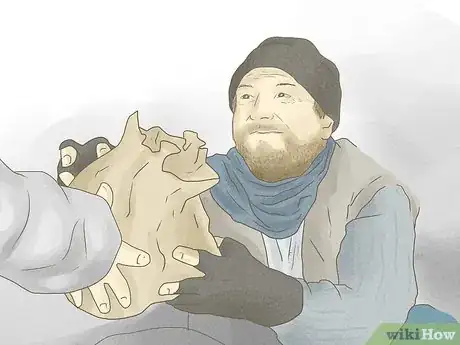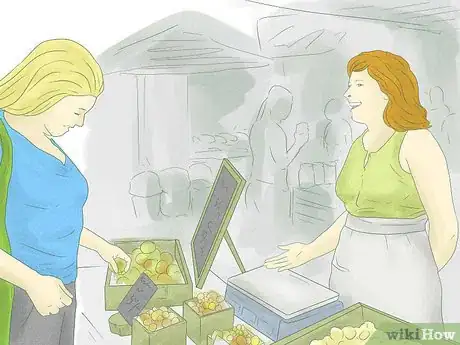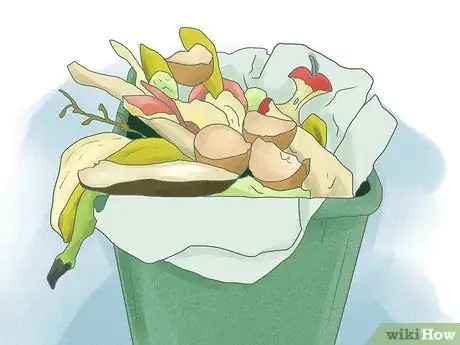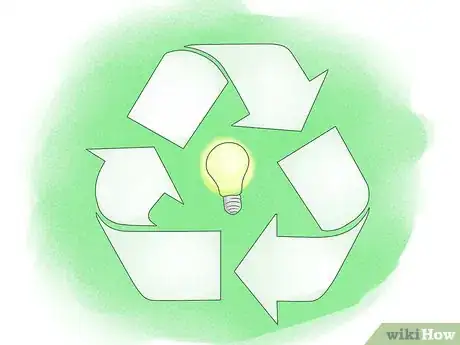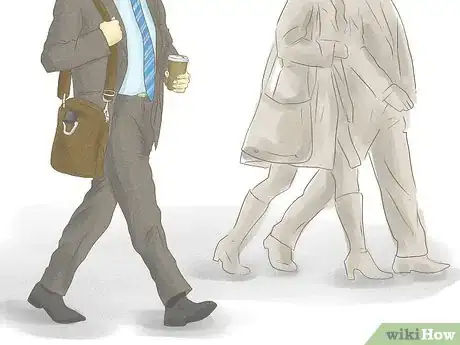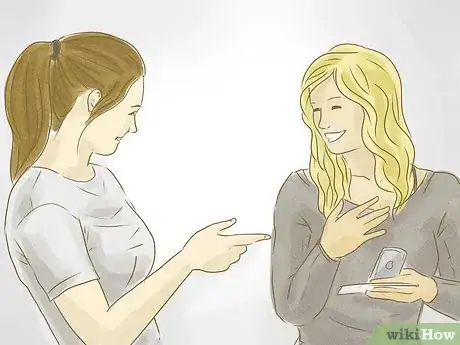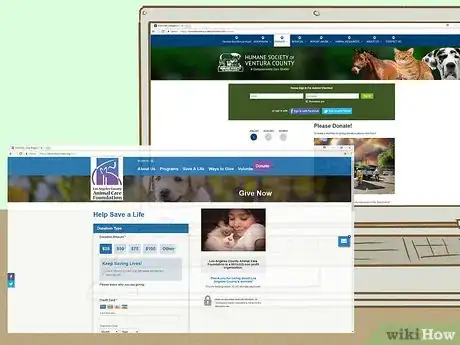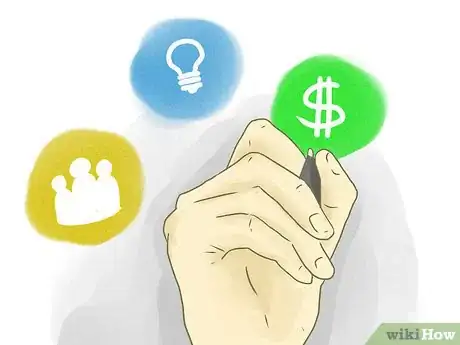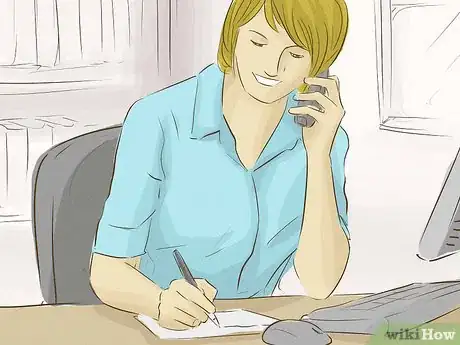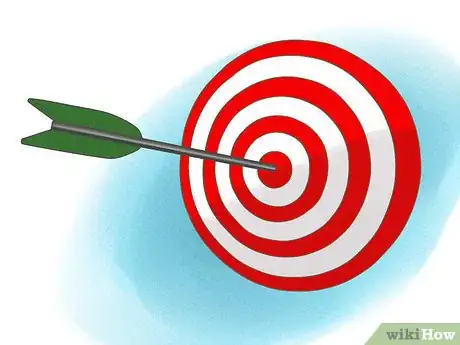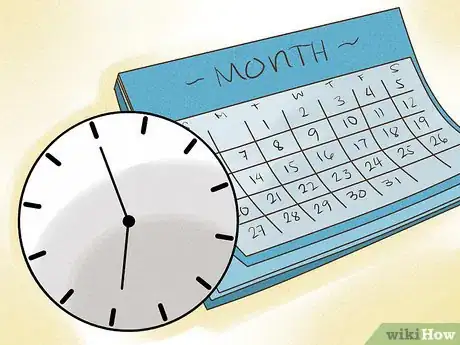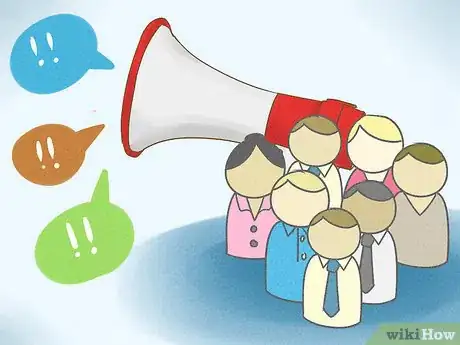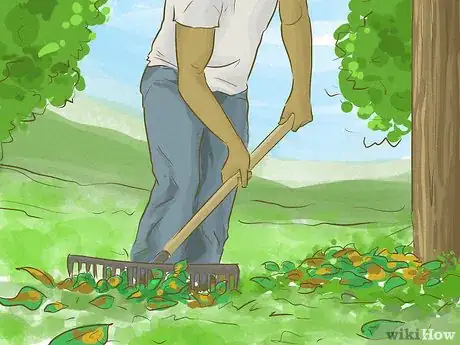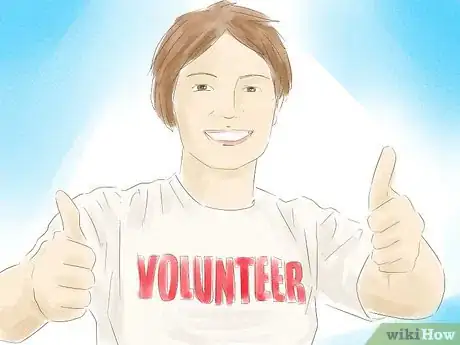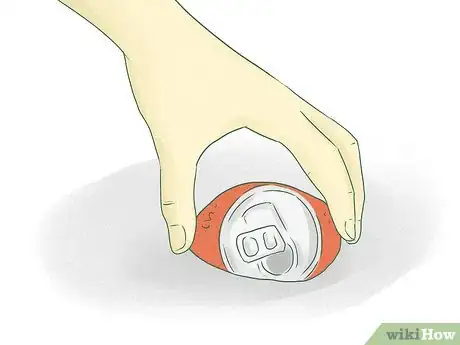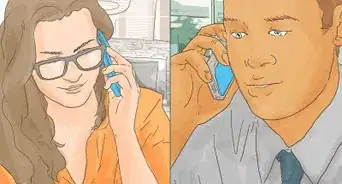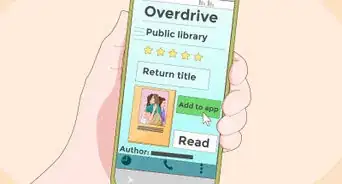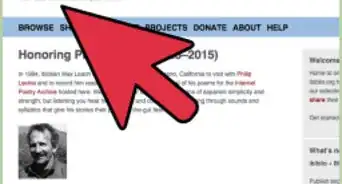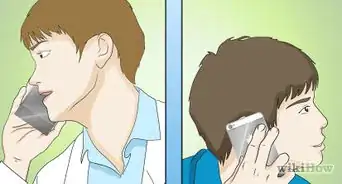This article was co-authored by Kris Jensen. Kris Jensen is the Principal of Regenerative Communities Collective, a design consultancy focusing on regenerative design, and the Founder and Executive Director of Gardensmiths, a community centered initiative focused on the connection between regenerative gardens and resilient people, Previously, he was the Executive Director of the San Bruno Mountain Watch in California. He has working in the environmental activism field for over 12 years.
wikiHow marks an article as reader-approved once it receives enough positive feedback. In this case, 87% of readers who voted found the article helpful, earning it our reader-approved status.
This article has been viewed 182,667 times.
A community feels more alive when people who live there love it enough to help improve it. Helping your community makes life better for your friends, family, and other people who live where you live. If you look around and see that your community has a lot of problems, there's no better time to start fixing them than right now. The more love you pour in, the better it will get. Keep reading for ideas on how to help your community be strong and vibrant.
Steps
Being a Good Citizen
-
1Stop to help when and where you're needed. It's a simple way to make your community better and help to create the kind of vibe that makes people feel safe and happy. If you see someone in need of assistance, come to their aid instead of averting your eyes. Do for others what you'd want them to do for you if you were in their situation.
- If you see a mother struggling to get her stroller down a set of stairs, offer to help her carry it.
- If you notice someone looking lost, help them get where they're trying to go.
- Figure out how you can help the people who ask for money in the street, instead of passing them without looking them in the eyes.
- Be the person who helps out in an emergency, instead of the one who assumes someone else will do it.
- Offer to shovel your neighbours' backyard or rake leaves for someone across the street. Babysit community kids, or watch their pets.
-
2Support your local economy. Healthy communities have healthy local economies. People work together to help each other make a living and thrive. You can help improve the health of your local economy in many different ways, from changing your shopping habits to starting a business of your own. Consider these different ways to help:
- Buy your food from local vendors. Try to get most of your produce from the farmer's market, where members of your community go to sell food they've worked hard to grow.
- Shop at local businesses whenever you can. For example, if you have the choice to buy a new pair of jeans at a chain discount store or a small business owned by a member of your community, choose the latter. Change your mindset from buying the cheapest available product to leveraging your purchases to provide the most community good. Knowing that your money will go toward boosting your local economy and building a strong, vibrant community is worth the extra effort and expense. Help others to see the light and help them come aboard to help you boost the local community's financial health.
- Consider starting your own business. You can serve your community by offering a great product and possibly even hiring employees.
Advertisement -
3Recycle and compost. Many communities are experiencing problems with landfills that are getting too full. Producing too much trash pollutes the environment, and that's not good for your community's long-term health. You can do your part to help improve the situation by recycling and composting as much of your waste as possible.
- If you want to go above and beyond, you could also spread awareness about how to recycle, or start a recycling program at your school or place of work.
- Composting is useful in more ways than one. It allows you to dispose of your food waste without putting it in the trash, and as a result you end up with rich soil you can use in your garden. Once you learn how to do it, show others how easy it can be.
-
4Save energy and water. Using excessive electricity and water strains community resources.[1] Saving energy and water is good for the planet as well as your local environment. Do your best to conserve energy and water and it will become an investment in your community's long-term health.
- Turning off your lights when you're not using them, using energy-saving appliances, decreasing your reliance on air conditioning, turning down the temperature on your water heater, and unplugging your computer when you power it down are all ways you can help save energy.
- Taking shorter showers, making sure your pipes aren't leaking, limiting your lawn watering, and using a low-water method of washing dishes are all ways you can help save water.
-
5Be less reliant on your car. Communities that rely heavily on car transportation often experience elevated air pollution levels. Air pollution is not only detrimental to plants and animals, it causes major health problems for humans, too. Using your car less often decreases your carbon footprint, which helps your community. Here are alternatives to try:
- Walk or bike where you need to go. It takes a little longer, but you see more along the way.
- Use public transportation. Even if your area doesn't have a great subway or elevated rail system, you probably have bus lines nearby.
- Carpool to work or school, instead of driving places by yourself.
Learning About Your Community
-
1Meet people. Knowing people in your community is a great way to start learning what you can do to help. In order to get to know a community even better, start building your network by getting out and meeting people. Go to local events, frequent local coffee shops, and get to know your neighbors. The more people you know in your community, the better.
- To break the ice with your neighbors, bake some muffins or cookies and wrap them up. Then take them door to door and introduce yourself. This will make it easier to strike up a conversation with a neighbor or invite them to your home for dinner.
-
2Do some research to identify the needs of your community. Before you can help your community, you should take time to do a bit of research and find out what the community needs. This step is especially important if you are new to the community or if you have not been very involved in the past. Maybe there's a river flowing through your city that's so polluted no one can swim there. Maybe the schools in your community need more resources to buy books and computer equipment. Maybe the homeless population in your community needs assistance. Whatever it is, figure out what needs to be addressed where you live.
- Use the internet to run some basic searches to find out what your community needs. Try pairing the name of your city with key terms like “community needs,” “volunteer opportunities,” and “problems.” Try other keyword searches to find out more.
- Read the local newspaper every day. The local newspaper will help you to get to know the community and learn what people are doing to address problems.
- Talk to people who have lived in the community for a long time. Ask questions, such as, “What is the biggest problem facing this community? How are people addressing that problem?”
- Try not to get overwhelmed by the size and scope of the problems your community is facing. Pick one thing that you care about changing, one thing that ignites your passion, and go from there.
- See if anyone else feels the same way you do. Is there an organization addressing this need? Do you know anyone who's as passionate as you are about creating change?
-
3Learn about organizations. Find out as much as you can about local non-profit organizations and charities. Visit their webpages and find out what they do, who they serve, why they do it, how they are funded, and what types of volunteer opportunities they have available. Keep track of organizations that you’d like to get involved with at some point.
- Websites like Idealist, Volunteer Match, and Serve.gov can also help you to find out about organizations that are looking for volunteers.
-
4Identify ways you would like to help. Once you have taken time to learn about your community, start identifying ways that you can help. Think back to what you have learned about the community, your interactions with people, and the needs organizations in the community. Make sure to ask yourself some questions before you get started.
- What community issue are you the most passionate about?
- What can you do to help that will best use your talents?
- What sort of time commitment are you able and willing to make?
- What do you need to do in order to start helping?
Getting Involved
-
1Choose a way to help out. Once you've identified the problem you want to solve, figure out how you personally can start working to fix it. Even if you do not believe that one person can change the world, you should realize that one person can make a difference—one step at a time. How are you going to make a difference?
- Find the place where your passions and skills intersect. For example, let's say your city has too few trees and you want to help. You can use social media to spread awareness about the problem by sharing what you know with as many people as possible and encouraging people to plant more trees.
-
2Set some reachable goals. The problem you've identified isn't likely to be solved easily; it'll probably require a lot of work; maybe years of work. It's even possible that after years of work, the problem still won't be entirely corrected. However, if you set manageable goals and start working toward them step-by-step, you'll eventually be able to look back and see the progress you've made.
- Set short-term goals. You can define short-term in a way that makes sense and is motivating to you. What do you want to have accomplished in one week, one month, or a year?
- Set long-term goals. In five years, what do you want your community to look like? What about ten? What seems doable in that amount of time?
-
3Outline a plan for getting things done. To accomplish your goals, you're going to need an action plan. And to execute an action plan, you'll probably need some help and funding. Write up a plan that details everything you're going to need to accomplish a given goal, including the following:
- People - Include the skill-sets that will be involved, the hours of work that they'll need to put in, the minimum number of volunteers or spokespeople that will be necessary to accomplish your goals.
- Resources - These might include such things as: buses to take people downtown for a river cleanup; garbage bags, shovels, protective gloves, and masks for the volunteers; pizza, sodas, and a salad to feed them at lunchtime. Think it through down to every last detail.
- Money - Create a budget and detail how much it's going to cost to execute your plan.
-
4Get other people involved. Ask around to find out who else is as excited to make a difference as you are. Try to form a core group of activists committed to carrying out the plan to improve your community. Everyone will have something to contribute, and together you'll be able to start getting things done. Even just telling other people about your goal and what you are doing to accomplish it can help you to achieve it.[2]
- To find passionate volunteers and spread the word about what you're doing; share information via social media. Go public with your plan to make a difference, and tell people how they can get involved. Hold meetings to discuss how to put your plan into action.
- Some people prefer to help by donating money instead of their time. Don't be afraid to ask for donations or hold a fundraiser to make money you can put toward your cause.
-
5Commit to following through. Now that you have goals and an action plan for meeting those goals, it's time to get organized and put in the real time and effort it takes to create change. If you back out now, your community might never see the solution of your dreams. It's not going to be easy to make things better, but every bit of effort you put into your project will make a difference.
Sharing Your Skills and Time
-
1Volunteer for a group that does work you admire. Every nonprofit or community organization in your area is probably in need of volunteers.[3] Donating your time is an excellent way to have a positive effect on your community, and to strengthen your relationships with your fellow community members, too. Find a group doing work that interests you and give them a call; chances are, they'll have a list of ways you can start helping out right away. Just be aware that becoming a volunteer is a serious commitment. It costs organizations a lot of time and money to train volunteers, so make sure that you will be available and willing to help out on a long-term basis. Here are a few examples of volunteer opportunities available in most communities:
- Helping out at park, river or beach clean-up days
- Answering phones at phone-a-thons to raise money
- Playing with cats and dogs at the animal shelter
- Serving meals at the soup kitchen or homeless shelter
- Working at a crisis hotline
- Being a counselor at a camp for kids
-
2Attend community events. It's likely that other people and organizations in your community are also taking steps to help improve it. They probably hold festivals, cleanups and meetings in an effort to make the neighborhood a better place. How often do you show up to community events? Start going to as many as you can. Just showing up is a way to help people in your community because it lets them know that you care. When you feel comfortable enough, you can even start volunteering to help out at these events.
- For example, if someone you know is trying to hold a "Bike to Work or School Day" on Monday mornings, and you've got a bike, why not give it a try? Bring a friend along, too. Show people in your community that biking is fun.
- Participate in fundraising walks and runs. Many nonprofits hold community walks and runs to raise money. Paying the entry fee directly benefits the nonprofit, and participating in the event helps spread awareness about the cause.
- Go to concerts, festivals and other events put on by local businesses or organizations. If no one shows up to these types of events, they might stop happening altogether.
-
3Get civically active. A great way to help your community is to participate in community decision-making. Stay up to date on activities that impact your community, and form educated opinions on important matters. For example, if your city is deciding whether to cut down a few acres of forest to allow a supermarket to move in, read up on the subject and decide what you think. Would it be better to keep the forest there, or does your community really need a new supermarket? Having an informed perspective and making your voice heard can have an effect on what direction your community takes. Encourage others to engage as well because civic engagement is crucial for a healthy democracy.[4]
- Voting is an important way to influence your community. Read up on the candidates and issues and vote in all local elections.
- Contact your representative about issues that matter to you. If you don't want that patch of forest to be cut down, or you think it a new supermarket could really help the community, call your representative or write a letter stating what you want to happen and why.
- Show up for community meetings at which decisions are being made. Take the opportunity to speak up about what matters to you. Would your community benefit from having more crosswalks on busier streets? Are there too many potholes on your block? Do you have an opinion on how the city should handle increasing levels of crime? Say so.
-
4Beautify your public spaces. If you look around and see trash in the street and graffiti on the windows in your neighborhood, you know where to start helping out. Making the spaces in your community feel brighter and cleaner will bring people out and result in better quality of life for everyone. The work you do will depend on the specific needs in your community.
- You can help to make your neighborhood more beautiful right away by picking up trash on your own. When you walk down the street, pick up trash you see and throw it away or recycle it. If there's too much for you to tackle on your own, get some friends involved to help you.
- Scrape off or paint over graffiti to freshen up buildings and fences. If you're good at painting, you could eve create a mural on a public wall for everyone to see. You might have to get permission from the building owner or city first.
- Do landscaping in areas that are overgrown with weeds. Mow them down or pull weeds by hand. Plant flowers or trees wherever you can. Adding more natural elements to urban spaces can help make them look and feel safe and inviting.[5]
- Create a community garden, where everyone can have a plot on which to grow vegetables, herbs or flowers. Ask people to pitch in to help break ground and lend their tools for the project.
- Always make sure to check with the owner of a piece of property before you do anything to it.
Community Q&A
-
QuestionHow can a child work towards the betterment of there community?
 Community AnswerClean up litter on your street. Donate clothes and toys you don't need anymore to charity. Ask your parents if they would volunteer with you.
Community AnswerClean up litter on your street. Donate clothes and toys you don't need anymore to charity. Ask your parents if they would volunteer with you. -
QuestionHow do I pick up garbage?
 Community AnswerIf it is safe to do so you can bend down, grasp it in your hand or hands, and place it in a waste receptacle. If it is an unknown or unsafe object you can use a stick with a nail in the bottom (pick pole) to remove it from the ground. There are also grabber tools that can be used. You should always wear gloves regardless.
Community AnswerIf it is safe to do so you can bend down, grasp it in your hand or hands, and place it in a waste receptacle. If it is an unknown or unsafe object you can use a stick with a nail in the bottom (pick pole) to remove it from the ground. There are also grabber tools that can be used. You should always wear gloves regardless. -
QuestionHow can I help my community by going to school?
 Community AnswerThe school is part of your community! All you have to do is help keep the halls, restrooms, and other communal spaces clean. Ask your teacher if he/she needs any help tidying the classroom, or if there's anything you can do to make her job easier.
Community AnswerThe school is part of your community! All you have to do is help keep the halls, restrooms, and other communal spaces clean. Ask your teacher if he/she needs any help tidying the classroom, or if there's anything you can do to make her job easier.
References
- ↑ http://homeguides.sfgate.com/can-conserve-energy-78831.html
- ↑ http://www.forbes.com/sites/glassheel/2013/03/14/6-ways-to-achieve-any-goal/
- ↑ http://www.volunteermatch.org/search/opp582940.jsp
- ↑ http://www.performwell.org/index.php/isd/child-a-youth-development/250-civic-engagement-for-youth
- ↑ http://www.ecolandscaping.org/02/landscape-design/beautifying-public-places-the-importance-of-plants/
About This Article
To help your community, support your local economy by shopping at local businesses and buying food from local vendors as often as you're able to. You can also help out your community by volunteering with your local government or organizations that are tackling problems and addressing needs in your area. Also, make an effort to attend community events, like festivals and neighborhood meetings, to show your support. For more advice from our Expert co-author, like how to learn more about your community, read on!
